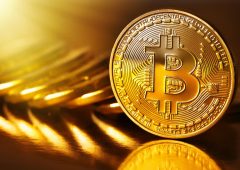Ripple’s ODL and Its Potential Impact on XRP Prices
25.08.2024 11:00 1 min. read Alexander Stefanov
Mickle, a respected wealth advisor and market commentator, recently discussed the potential influence of Ripple’s On-Demand Liquidity (ODL) on XRP’s value.
Contrary to some opinions that the buy and sell activities within ODL transactions cancel each other out, Mickle believes that the increased need for market makers to hold XRP will likely drive up its price.
Mickle pointed out that while some critics argue ODL transactions are price-neutral due to the simultaneous buying and selling of XRP, they overlook an important factor. Market makers, responsible for facilitating these transactions, need to maintain reserves of XRP to meet market demands. As global ODL transactions rise, the demand for XRP among these market makers grows, leading to higher accumulation of the token. This increased demand coupled with XRP’s limited supply is expected to exert upward pressure on its price.
In response, Eri, a prominent member of the XRP community, countered Mickle’s viewpoint by citing Ripple’s own court documents. These documents suggest that ODL transactions, involving the purchase and sale of XRP in quick succession, do not significantly impact its market value, as they are effectively demand-neutral.
Eri also noted that Bob Way, who Mickle referenced, left Ripple before major changes were implemented in ODL’s operational framework. Thus, the current system for managing ODL transactions at Ripple may differ significantly from the setup described by Way.
-
1
SEC Seen as Nearly Certain to Approve Wave of Crypto ETFs, Say Bloomberg Analysts
21.06.2025 13:00 2 min. read -
2
Ethereum Price Prediction: This Trader Thinks ETH Could Soon Hit $12,000 – Here’s Why
25.06.2025 23:53 3 min. read -
3
Solana Price Prediction: Trader Thinks SOL Could Rise to $200 in July – Here’s Why
26.06.2025 22:25 3 min. read -
4
Dogecoin’s Slump Could Be the Setup for a Massive Breakout
22.06.2025 14:00 2 min. read -
5
Peter Schiff Doubts Stablecoins Can Shield a Weakening Dollar
19.06.2025 13:00 1 min. read
Here is How Ethereum Can Change Wall Street, According to ETH Co-founder
Ethereum co-founder and Consensys CEO Joe Lubin believes Ethereum’s growing use in corporate treasuries could redefine how traditional finance views the second-largest digital asset.
Whale Activity Alert: Which Altcoins Saw Millions Flow Into Exchanges?
A wave of large-scale altcoin deposits has hit centralized exchanges over the past 24 hours, according to data from on-chain analytics platform Santiment.
Trump’s Truth Social Files For Spot Crypto ETF Holding 5 Cryptocurrencies
Truth Social, the media venture linked to U.S. President Donald Trump, has taken a bold step into the digital asset space with a fresh filing for a spot cryptocurrency exchange-traded fund (ETF).
Whales Quietly Accumulate Four Altcoins: Early Signals of Potential Rally
Large-scale investors are steadily increasing long positions in several overlooked altcoins, signaling a potential early-stage accumulation phase.
-
1
SEC Seen as Nearly Certain to Approve Wave of Crypto ETFs, Say Bloomberg Analysts
21.06.2025 13:00 2 min. read -
2
Ethereum Price Prediction: This Trader Thinks ETH Could Soon Hit $12,000 – Here’s Why
25.06.2025 23:53 3 min. read -
3
Solana Price Prediction: Trader Thinks SOL Could Rise to $200 in July – Here’s Why
26.06.2025 22:25 3 min. read -
4
Dogecoin’s Slump Could Be the Setup for a Massive Breakout
22.06.2025 14:00 2 min. read -
5
Peter Schiff Doubts Stablecoins Can Shield a Weakening Dollar
19.06.2025 13:00 1 min. read


